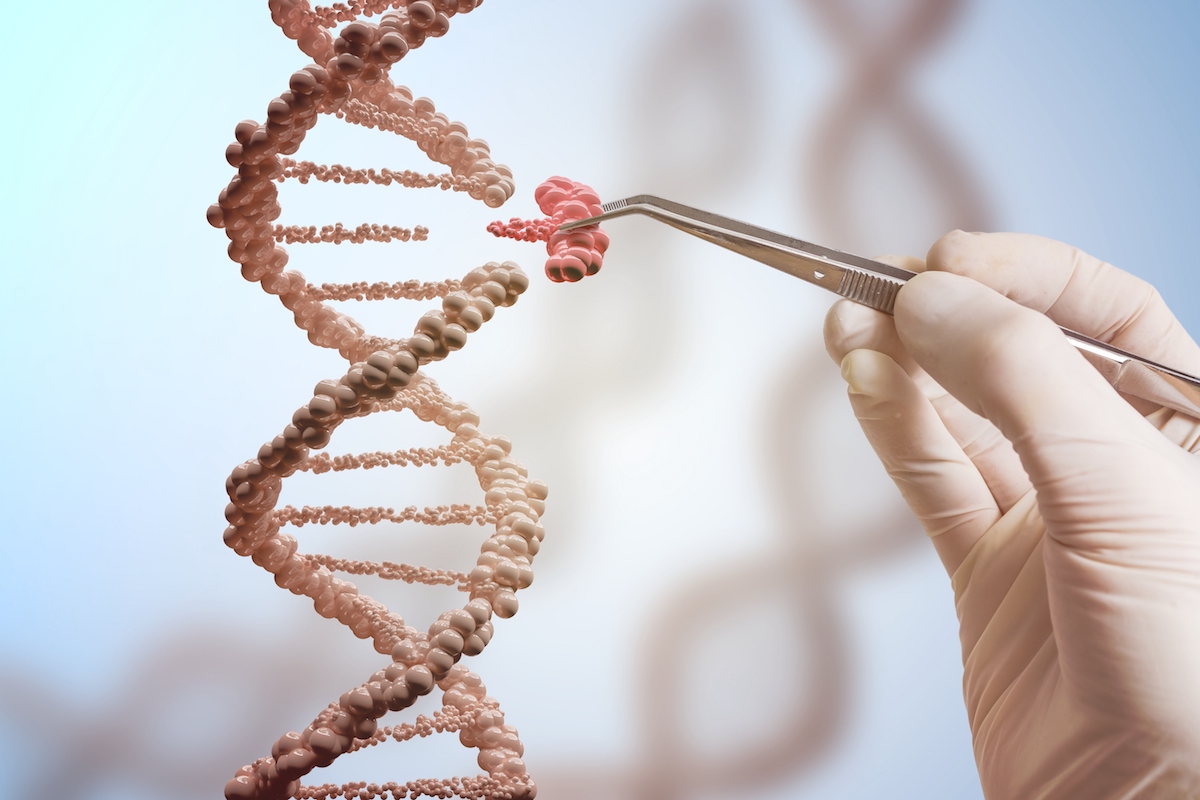CRISPR Gene Editing May Be Doing More Damage Than Scientists Thought

Like a molecular ninja, the genome-editing tool CRISPR-Cas9 slices through ultraspecific segments of DNA to cut out unwanted bits of genetic code. It's a precise and promising method of genetic editing that's widely used in scientific research. And scientists hope it could one day be used to selectively remove genes that result in medical problems such as HIV, sickle cell disease and cancer.
Unfortunately, a new study published today (July 16) in the journal Nature Biotechnology suggests that this day may be further off than expected — and that CRISPR's cellular swordsmanship may result in much more collateral damage than previously thought.
While using CRISPR to edit the DNA in both mouse- and human-derived cells, the study authors found that huge chunks of DNA were unintentionally being deleted, rearranged and otherwise mutated so severely that cells lost function in about 15 percent of cases.
The study provides the most systematic and severe reckoning of the potential genetic damage caused by CRISPR manipulation to date, said study author Allan Bradley, a senior group leader and director emeritus at the Wellcome Sanger Institute in England. And the results may be reason to rethink the technology's use in clinical settings until further research can be done, he said.
"CRISPR is not as safe as we thought," Bradley told Live Science. "The DNA repair process is not 100 percent foolproof, and there may be problems that need to be looked into further."
Cracking the code (open)
When you picture DNA, you probably think of a double helix — a twisted, ladder-like sequence of letters carrying your genetic information. Each rung of the ladder consists of two linked nucleotides (tiny organic molecules) known as a base pair. Your complete genome contains about 3 billion of these base pairs, split among 23 pairs of chromosomes that are present in every cell of your body.
The precise order of these base pairs makes up your unique genetic code. Mutations in this code — say, if a base pair is missing or upside-down — can cause various genes to lose their function, sometimes resulting in genetic disorders like cystic fibrosis, hemophilia and many types of cancer.
Get the world’s most fascinating discoveries delivered straight to your inbox.
CRISPR was designed to eliminate ultraspecific genetic defects like these by cutting through targeted sequences of DNA with a scalpel-like enzyme called Cas9. After Cas9 severs DNA in the appointed spot, that segment of DNA naturally starts to repair itself. Through this method, problem genes can be swiftly removed, and sometimes custom genetic sequences can even be added into the break site before the DNA seals itself up again.
Previous studies of CRISPR have not shown many unforeseen genetic mutations caused by this precise slicing action, but those studies may not have been looking hard enough, Bradley said.
"The consequences of [CRISPR-induced mutations] can be literally millions of base pairs away from the break site," Bradley said.
In their new study, Bradley and his colleagues used CRISPR to edit a series of mouse-derived stem cells, then systematically looked at the cells' DNA base pairs, moving farther and farther away from the cut site. Through this meticulous approach, the researchers found that roughly 15 percent of the studied cells were being mutated so much that they lost their function.
"In the simplest form, these mutations are deletions of large amounts of DNA," Bradley said (in some cases, thousands of DNA base pairs went missing after being manipulated by CRISPR). "But there are much more complex versions as well."
For example, Bradley said, the team detected cases where sequences of genetic code were "scrambled" or inserted into the strand backward. In some cases, long sequences of DNA that should have been thousands of base pairs away were inadvertently stitched into the CRISPR cut site. In other cases, sequences of code nowhere near the cut site — some located millions of base pairs away — were similarly mutated.
After looking at many different locations along the cell's DNA, the team then turned to other types of cells, including human-derived stem cells grown in the lab, to see if the damage pattern was repeated. Their observations remained consistent: About 15 percent of CRISPR-manipulated cells were being unintentionally mutated in dramatic ways.
A random cut
Ultimately, the precise consequences of these mutations are hard to estimate, as different types of cells use different operations to repair their DNA.
"Because you have a random repair process of rejoining DNA, I think anything is potentially possible when you're looking at billions of different events," Bradley said.
So, what does this mean for future CRISPR research? To Bradley, this study's findings should not discredit CRISPR-Cas9 as a promising genetic research tool but should make scientists cautious when thinking about using the gene-editing tool in a clinical setting.
Maria Jasin, a researcher from Memorial Sloan Kettering Cancer Center who was not involved in the study, agreed. "This study shows that further research and specific testing is needed before CRISPR-Cas9 is used clinically," Jasin said in a statement.
Originally published on Live Science.

Brandon is the space / physics editor at Live Science. With more than 20 years of editorial experience, his writing has appeared in The Washington Post, Reader's Digest, CBS.com, the Richard Dawkins Foundation website and other outlets. He holds a bachelor's degree in creative writing from the University of Arizona, with minors in journalism and media arts. His interests include black holes, asteroids and comets, and the search for extraterrestrial life.


